Topics:
HY-GUARD EXCLUSIONSubscribe now and get our latest blog and video content delivered straight to your inbox.
A Comprehensive Guide to Dryer Vent Covers

Dec 1, 2023

Home ventilation is a delicate process. You want air to be able to circulate through your house to avoid stagnation, but you also want to avoid providing entry points for weather and wildlife. This delicate balance is a constant tension for homeowners.
When it comes to dryer ventilation, most vents terminate through the side of a home, providing a gaping hole for snow, rain, and critters to gain access. As a result, it’s very common for home builders and contractors to install outside dryer vent covers over a dryer exhaust vent.
But what are these covers, anyway? Why do you need one, and what are they made of? How many types of exterior dryer vent covers are out there — and what kind should you get?
As the manufacturers of quite a few makes and models of dryer vent covers, we want to answer those questions for you (and more).
By the time you’re finished here, you’ll know what kinds of dryer vent covers there are, what size you need, and what type is the best fit for your dryer exhaust vent.
What Is a Dryer Vent Cover?
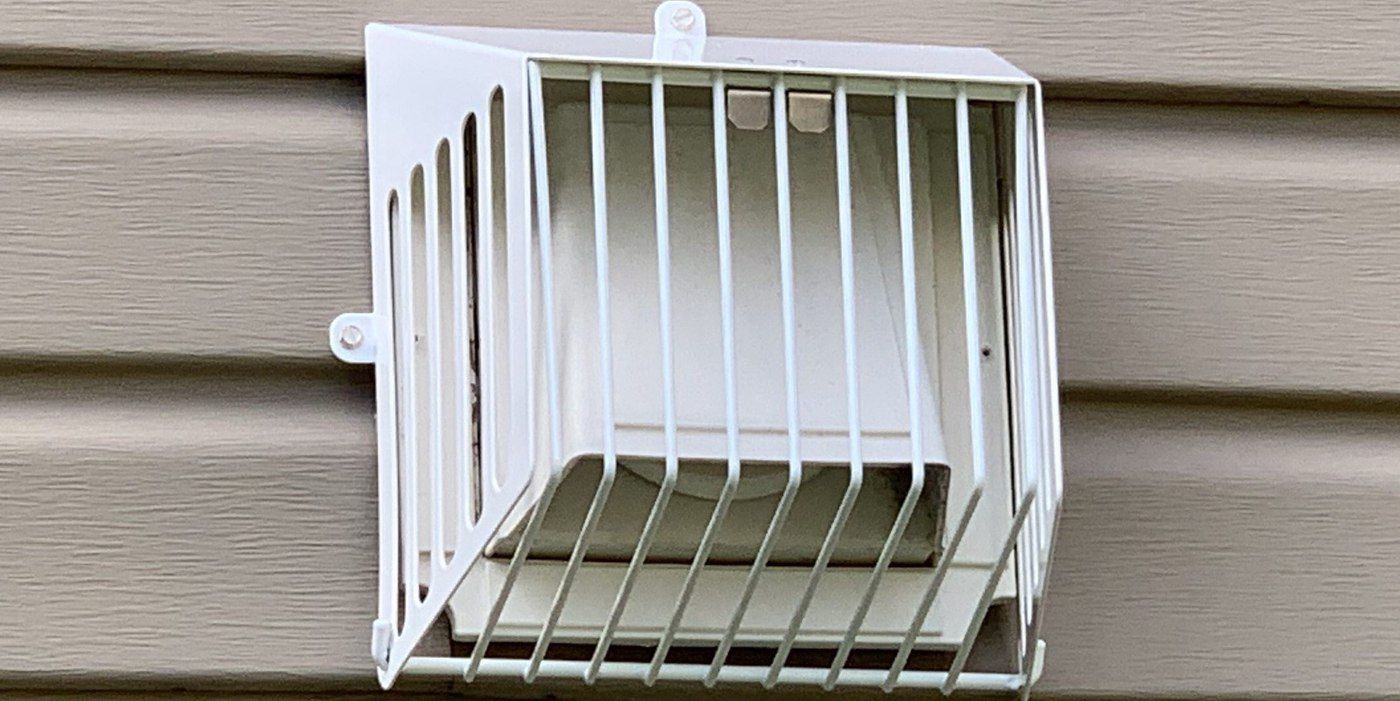
A dryer vent cover goes over the spot where the dryer exhaust vent exits your home. They’re designed to allow the air that goes through the dryer (as it runs) to vent out of the home properly while keeping out animals like squirrels, birds, bats, mice, and rats.
They’re also designed to maximize airflow to keep dryer lint moving properly through the dryer vent. Dryer lint accumulation is dangerous; if enough gathers at the base of your dryer, it could get too close to the heating filaments and cause a dryer fire.
Dryer vent covers may not look like much, but their dual functions as a ventilation tool and wildlife exclusion device make them a versatile and vital component on any home.
Do You Need a Dryer Vent Cover?
If your home (or apartment or condo) has a dryer, then yes, it’s strongly recommended that you have a dryer vent cover.
Like roof vents, soffit vents, and foundation vents, dryer vent ports offer animals and insects the opportunity to get into your home. An outside dryer vent cover is a simple, cost-effective solution that works 24 hours a day, 365 days a year.
What Materials are Dryer Vent Covers Made Of?
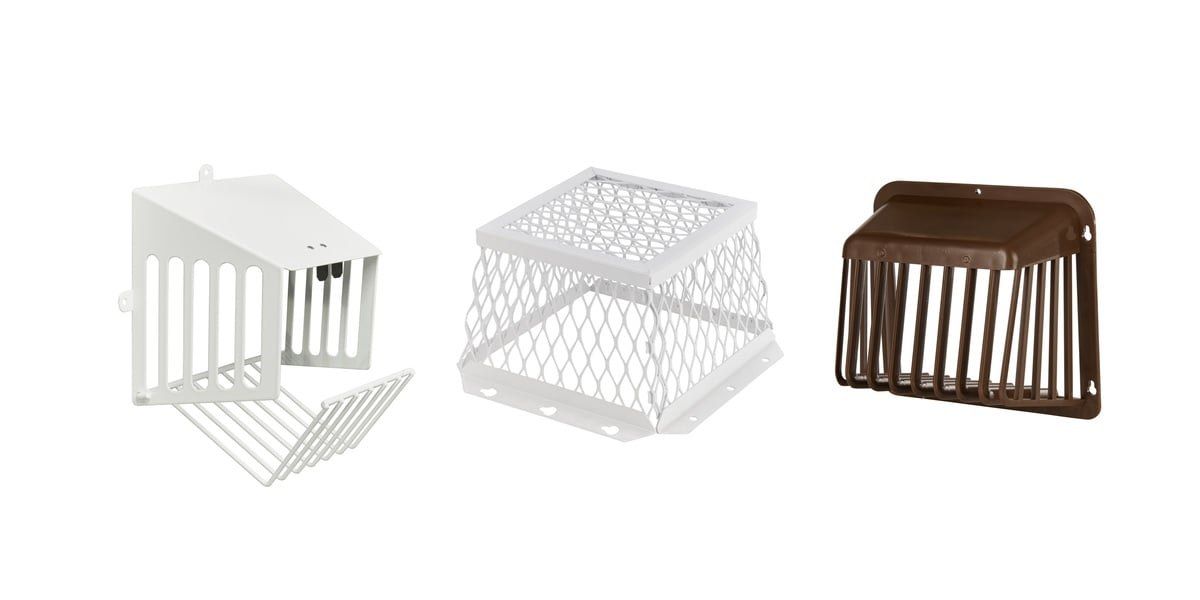
Dryer vent covers are typically made of one of three materials:
- Plastic
- Aluminum
- Steel
Plastic, depending on how the vent cover is made, are a decent animal deterrent at best, and pretty much useless at worst. Some animals can bypass plastic very easily and get into your dryer vent.
Aluminum dryer vent covers (on the whole) tend to be more effective than plastic, but some critters (like squirrels, mice, and rats) can still chew through them and gain access.
Steel dryer vent covers, on the other hand, are incredibly effective as wildlife exclusion devices when installed properly. Animals won’t be able to tear them off or chew through them no matter how hard they may try.
What Types of Dryer Vent Covers Are There?
There are several kinds of dryer vent covers, but to simplify things, we’ll break them down into three common types:
- Dryer vent covers with louvers
- Hood-style dryer vent covers
- Bolt-on dryer vent covers
Dryer Vent Covers with Louvers

Dryer vent covers with louvers are very common, but they also offer minimal critter protection. The louvers open as air from the dryer exits the vent, and they stay closed when no air is moving through them. Outside air blowing toward the house can’t open the louvers; they only open in one direction.
These louvers are designed to keep critters out in theory, but in practice, they don’t exclude wildlife very well. Most critters can pop the louvers off simply by pulling on them or chewing through them, both gaining access and allowing future access to other animals.
Hood-style Dryer Vent Covers
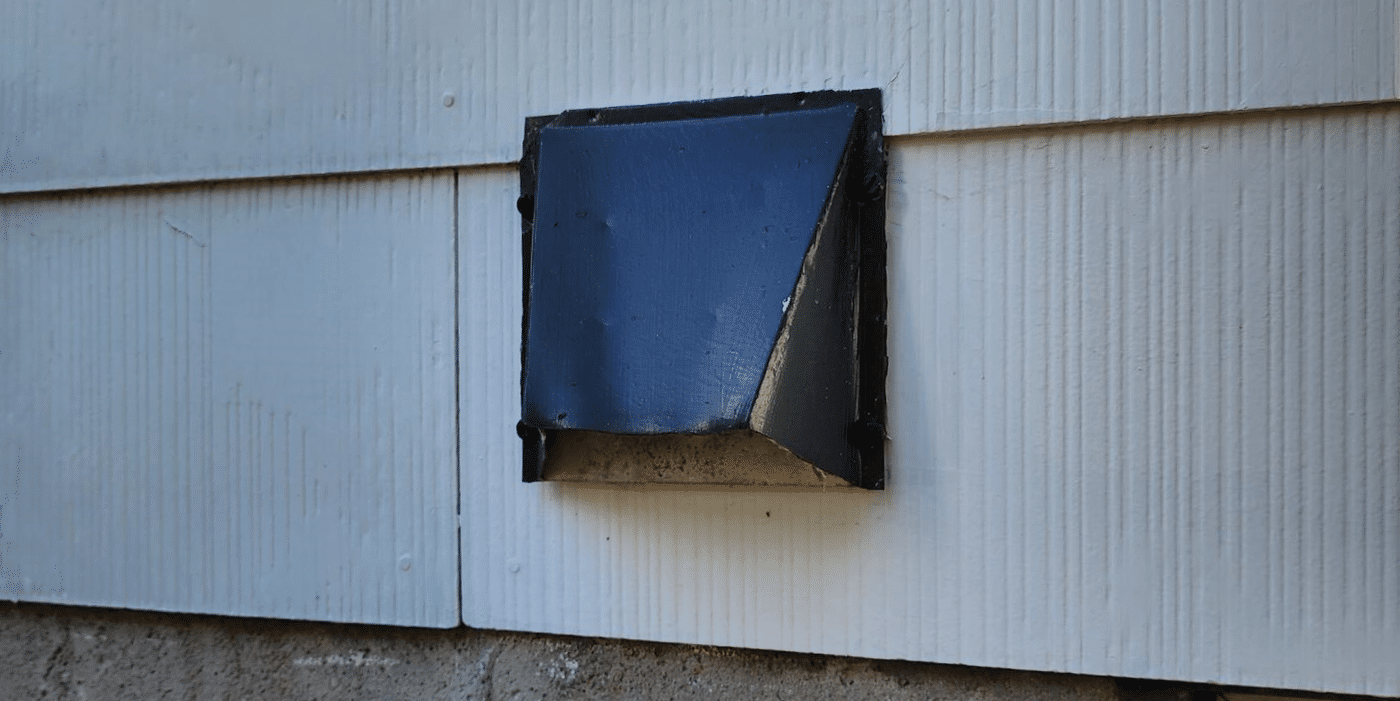
Hood-style dryer vent covers work based on angles. The opening of the vent cover is perpendicular to the exhaust vent, meaning critters have to climb up through the vent cover and into the vent. Some hood-style covers even come with a circular, aluminum louver for an extra layer of protection.
These hood-style dryer vent covers probably provide better protection than covers with louvers, but animals can still get past them. They use their claws to climb up the vent with little to no issue, and even if the vent has an aluminum louver, critters will chew right through it.
Bolt-on Dryer Vent Covers

Bolt-on dryer vent covers are usually installed as an additional layer of protection on top of a louvered cover or a hood-style cover. Whether they’re made of plastic or steel, they’re the most effective animal exclusion dryer vent cover.
Since they bolt directly into the brick or siding of your house, they don’t even provide critters the opportunity to get near the exhaust vent, let alone into it. Wildlife also has trouble biting through the thick plastic and has no chance to chew through a steel bolt-on dryer vent cover.
HY-GUARD EXCLUSION Dryer Vent Covers
At HY-C, we manufacture a variety of dryer vent covers under our HY-GUARD EXCLUSION brand. All of these covers are the bolt-on variety, meant to be used on their own or in conjunction with a louvered or hood-style vent cover.
Below are the dryer vent covers produced under the HY-GUARD EXCLUSION brand, the sizes and color(s) they come in, the materials they’re made from, and more.
Steel Dryer Vent Exhaust VentGuard
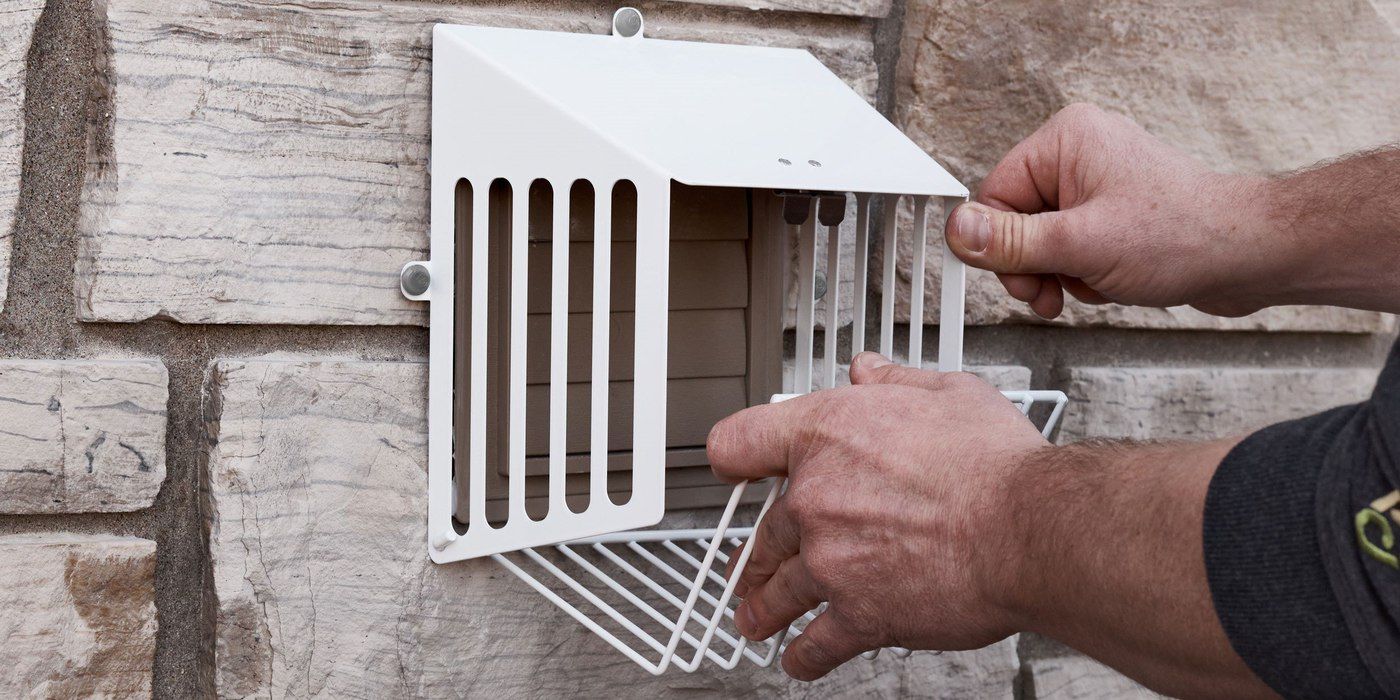
Available in two sizes — a 6-inch width for 4-inch vents and an 8-inch width for 6-inch vents — the Steel Dryer Vent Exhaust VentGuard bolts over a dryer exhaust using three bolts (one on the top and two on each side).
Its most prominent feature is its hinge-style opening which locks closed to prevent animal intrusion and opens easily to allow for dryer vent cleaning. Its steel construction ensures critters can’t pull it off or chew through it.
Plastic Dryer Vent Exhaust VentGuard
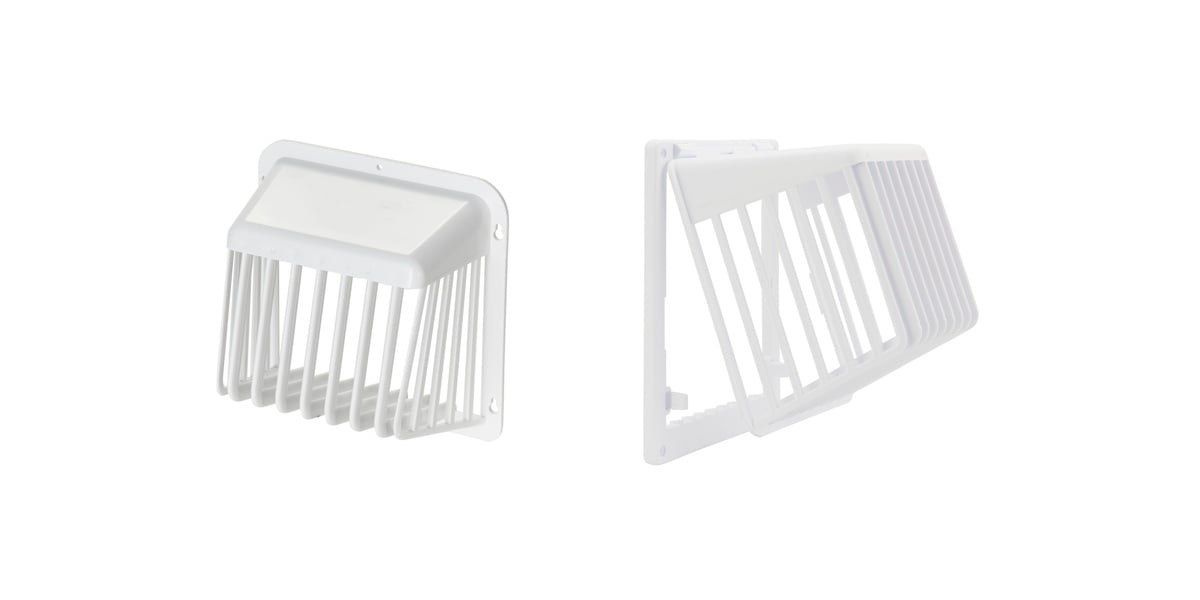
The plastic version of the Dryer Vent Exhaust VentGuard also comes in a 6-inch width for 4-inch vents and an 8-inch width for 6-inch vents.
The 6-inch version features keyhole-style attachment points that slide onto the bolts and lock into place. This attachment style allows for easy removal for dryer vent cleaning access (but not so easy that animals can figure out how to take it off).
The 8-inch version, on the other hand, features the same hinge-style opening method of the Steel Dryer Vent Exhaust VentGuard, so you never have to remove it from the side of your house.
Both styles come in three colors — white, tan, and brown — to match the desired aesthetic of your home. While they’re made of plastic, they’re thick enough to avoid damage from animals, and their bolt-on attachment style means they’ll stay on securely.
Universal VentGuard
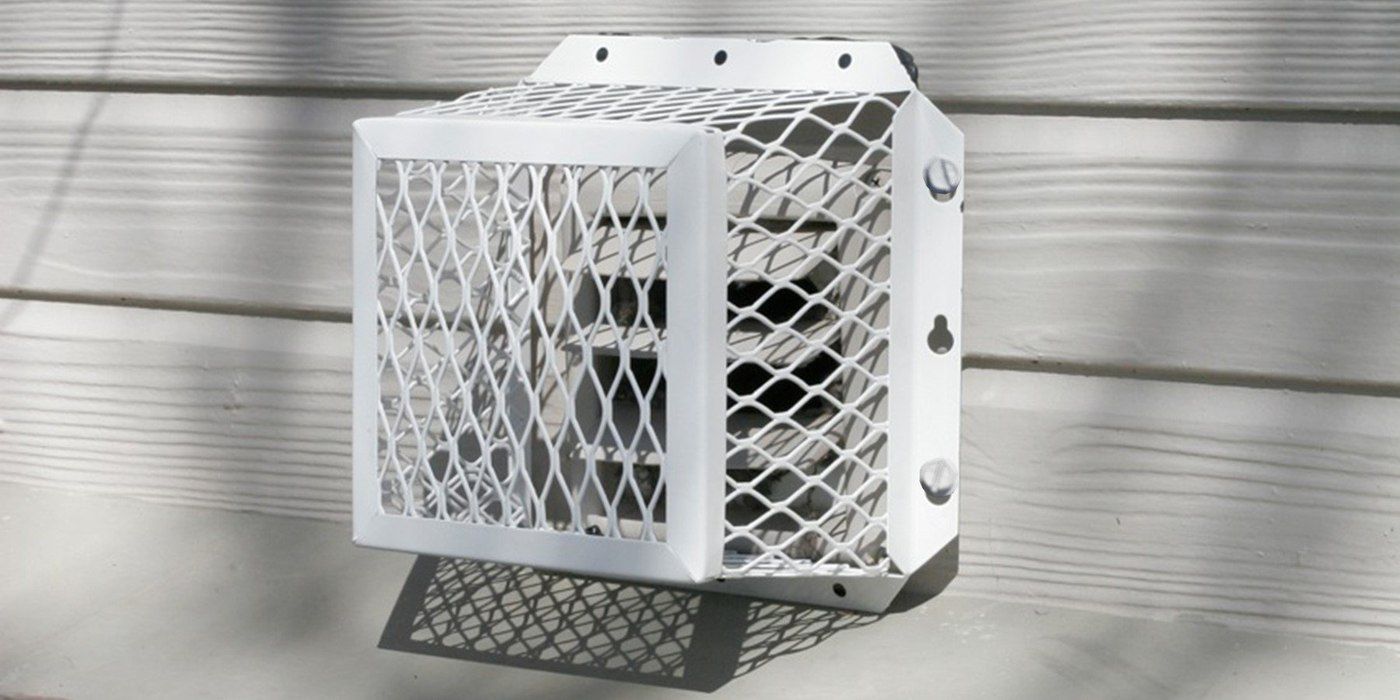
Our Universal VentGuard is arguably the toughest exterior dryer vent cover we make. It’s made from stainless steel, and it features a ⅝” mesh that’s tight enough to keep even the smallest critters out while still allowing enough airflow out of the dryer exhaust vent.
It doesn’t feature a hinge-style opening, but it does bolt on using the keyhole-style attachment points, so it can slide on and off easily enough for vent cleaning. It’s designed to cover most 3-inch and 4-inch vent openings and/or louver-style covers.
Which Dryer Vent Cover Should You Get?
It’s probably clear by now that there’s more to dryer vent covers than first meets the eye. From sizes to materials to even the color of the cover, there’s so much to consider before choosing the right one.
So — which one should you get?
It’s likely that your home came pre-installed with louver-style dryer vent covers. These covers — while handy — offer the bare minimum level of protection against critters. Just about any animal out there will be able to remove them with little effort.
For a more robust level of protection, it may be wise to invest in a bolt-on style cover. Between plastic and steel, 6-inch and 8-inch sizes, and even some color options, HY-GUARD EXCLUSION offers plenty of bolt-on vent covers to exclude animals from just about any dryer vent.
If you want the best level of protection to keep critters out of your dryer vent, give them a try. They’re easy to install, and they’re likely to last for as long as you own your home.

![A call to action banner which leads to the "How to Use a Dryer Vent Cleaning Kit [6 Steps with Pictures]" article.](https://no-cache.hubspot.com/cta/default/5842867/interactive-164621278070.png)